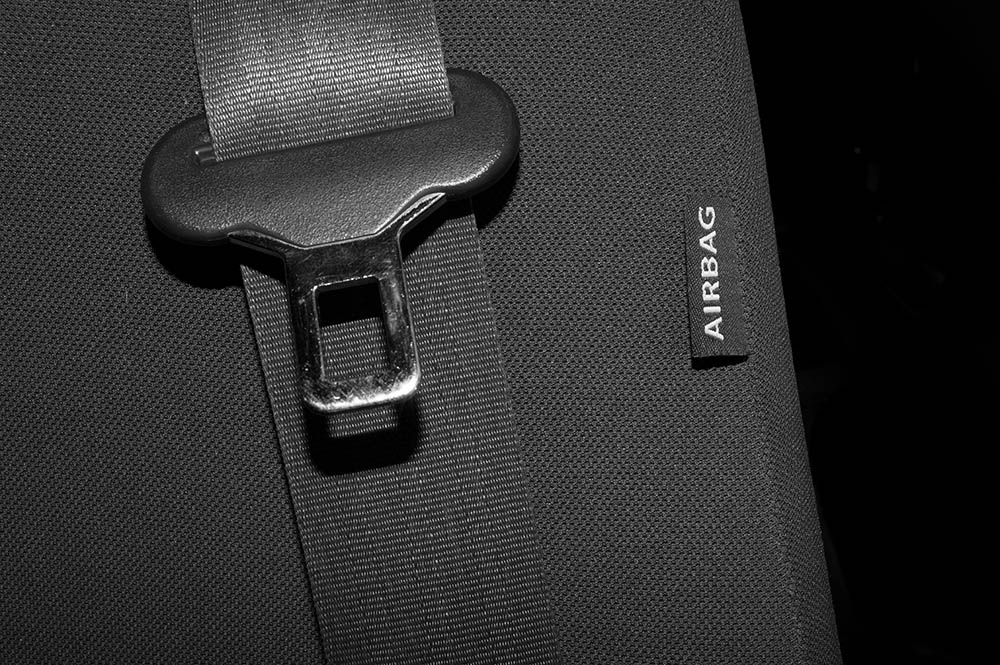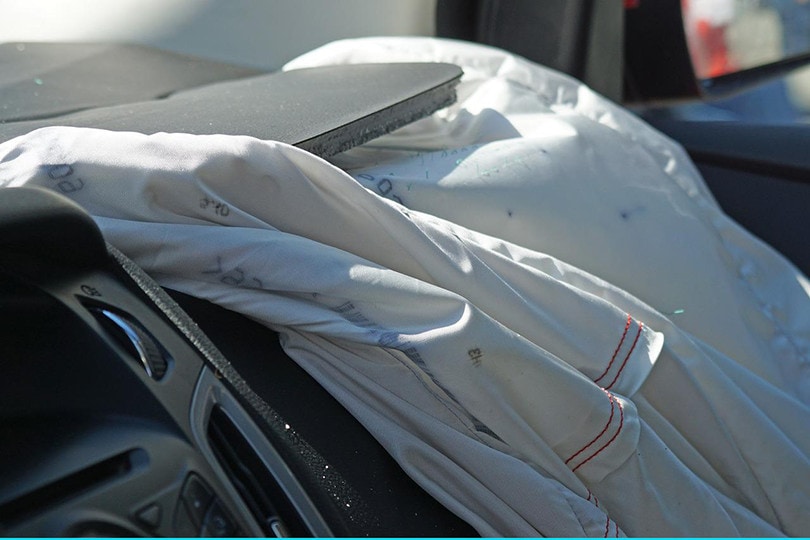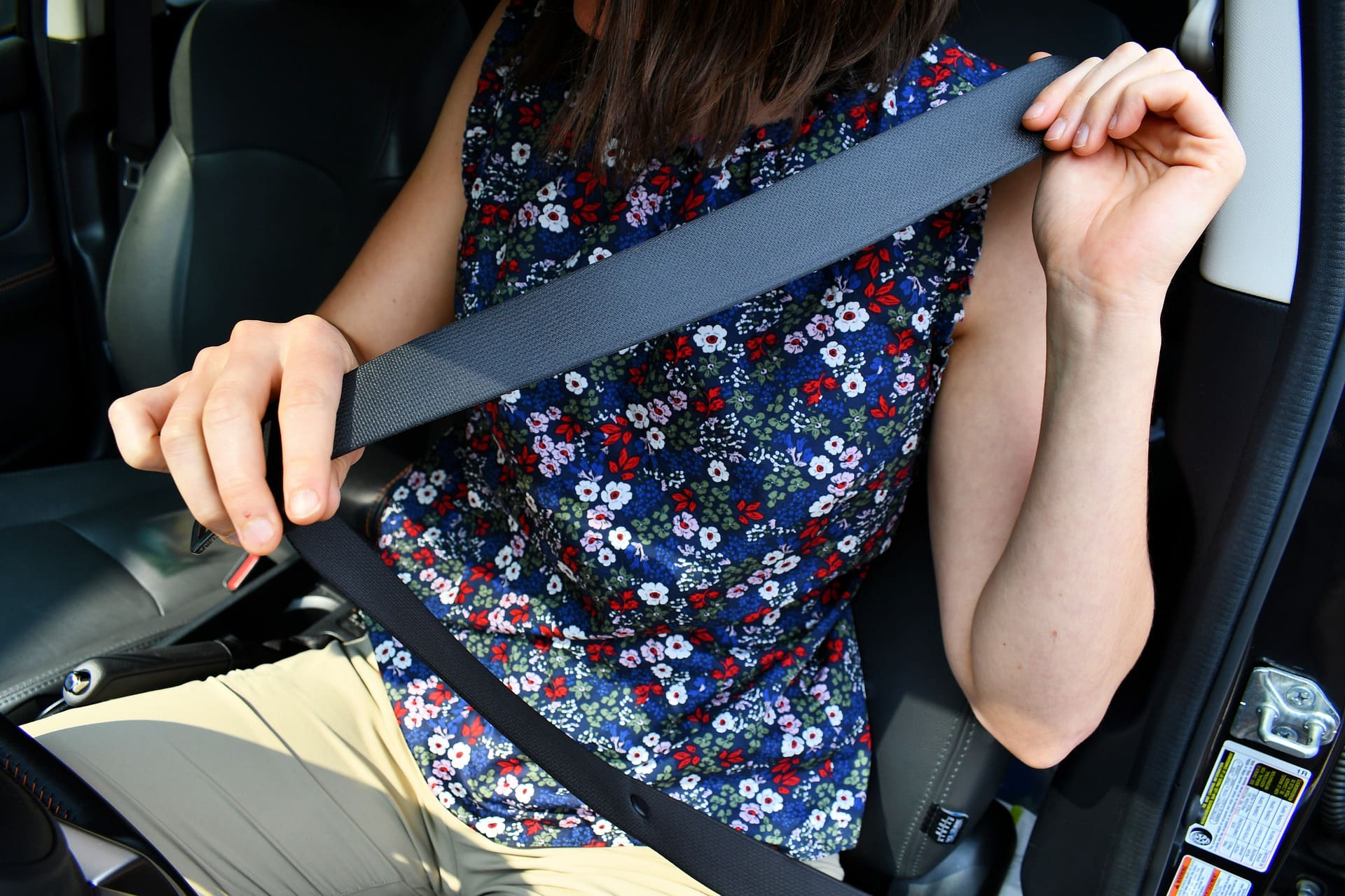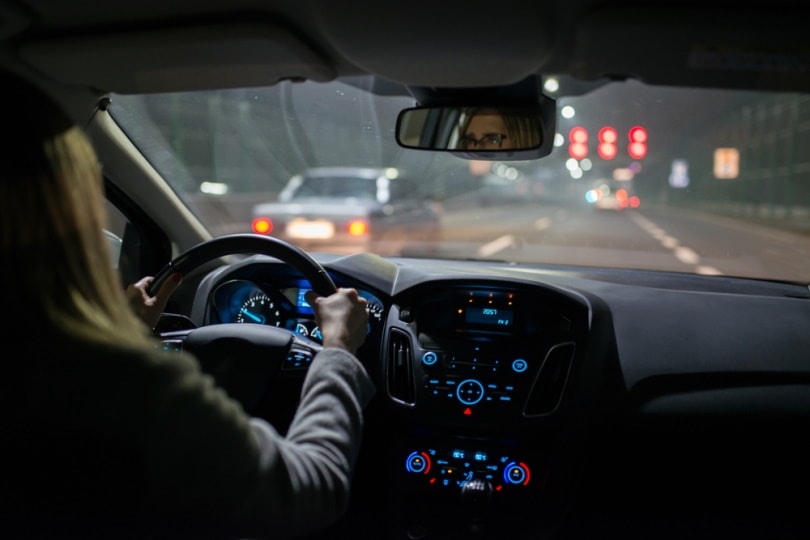How Are Airbags & Seatbelts Tested? Levels, Types, & FAQ
-
Jeff Weishaupt
- Last updated:

The rise in vehicle safety features means that driving is now safer than ever. But how do these safety features, like airbags and seatbelts, get tested before they are put into production vehicles?
Airbags and seatbelts are put through various tests to ensure they work properly and will perform as intended in the event of a crash. These tests include crash simulations, where dummies are used to test how well the airbags and seatbelts work in different crashes.
Airbags are also tested using special sensors that measure the force of the deployment and how well the airbag protects the dummy in a crash. Similarly, seatbelts go through dynamic tests.
In this guide, we go into detail about the testing for airbags and seatbelts. Plus, we explain why this is necessary besides the obvious need for safety.
How Do Airbags Get Tested?
Before explaining how airbags undergo testing, it’s essential to give a brief overview of how airbags work. The function of an airbag is to provide cushioning and support for a car’s occupants during a collision.
As the name suggests, airbags are inflated with air. However, the air that fills an airbag doesn’t come from a pump or canister of compressed air. Instead, it’s produced by a chemical reaction. So, for example, when the crash sensor detects a collision, it triggers a chemical reaction that produces a large volume of gas very quickly.
It’s this gas that fills the airbag and provides the cushioning effect. Keeping this in mind, when the manufacturers are testing an airbag, they ensure that the chemical reaction happens correctly and the airbag deploys quickly and effectively in a crash.

Levels of Airbag Testing
Manufacturers have to do several tests to ensure the airbags are working correctly. If, however, we only talk about the conformity of production (CoP) tests, we can identify the following levels of testing.
- Level 1: At this level, the manufacturers test the module components of the airbag. These include the ignitor, gas generator, and the bag’s folding. In doing so, they check the physical and functional integrity of the components.
- Level 2: The focus of this level is on system performance. Here, the manufacturers verify that the bag is deployed per expected parameters. At this stage, they test deployment and volume.
- Level 3: At this point, the bag has already been integrated into the car component. The tests at this level aim to verify if the bag deploys correctly in actual conditions. Thus, the force and folding of the airbag are checked.
- Level 4: These are called homologation tests. The car is driven on a test track, and airbag deployment is checked in different scenarios, such as head-on collisions, side impact collisions, and rear impact collisions. These tests allow for impact analysis.
Besides the function and performance of an airbag, the manufacturers also have to test its fabric. The textiles, adhesive bonds, seams, and stitching must meet specific standards to be used in an airbag.
The manufacturers use several methods to test these materials. One is the tear strength test, in which a fabric sample is torn apart to see how strong the material is. Another is the burst strength test, in which a fabric sample is inflated until it bursts to see how much pressure the fabric can withstand. Ideally, the fabric should be strong enough to withstand the force of inflation.
To test the adhesive bonds, manufacturers use a shear strength test. In this test, a sample of the adhesive is placed between two pieces of the fabric and then pulled apart to see how strong the bond is.
The manufacturers also use a heat-seal strength test. In this one, the adhesive’s sample is heated and then cooled to see how well it can withstand temperature changes.

Types of Airbag Testing
Typically, there are two types of airbag tests to evaluate their adequacy. These tests determine the efficacy of the airbags in different temperatures and settings.
Static Deployment Tests (SDT)
The Static Deployment Test is the first type of test that’s conducted on an airbag. In this test, the airbag deploys without any subject car.
The manufacturers conduct this test on a system level to check the function of different airbags at various room temperatures. The purpose is to determine if the temperature deviations affect the airbags’ performance.
- Driver Airbags: These airbags are located on the steering wheel and are designed to protect the driver in a frontal collision.
- Passenger Airbags: These are usually located on the dashboards to protect the passengers.
- Side Curtain Airbags: In some models, side curtain airbags are also present for additional safety. They protect the occupants’ heads in case of a side impact collision.
- Instrument Panel: The airbags on the instrument panel protect the driver’s knees in a frontal collision.
How Are Seatbelts Tested?
The seatbelts in all vehicles undergo multiple rounds of testing before they are cleared for use. In the United States, the National Highway Traffic Safety Administration (NHTSA) is responsible for issuing safety ratings for seatbelts.
Typically, manufacturers test seatbelts for the following features:
Tensile Strength
A seatbelt’s tensile strength is the force required to break it. Measuring this is important because the seatbelt needs to be strong enough to restrain the occupants in a crash.
Webbing Elongation
The webbing elongation of a seatbelt is the amount that the webbing stretches when it is subjected to a force. The seatbelt must be able to stretch a certain amount to absorb the energy of a collision and prevent occupants from being thrown from the vehicle.
For instance, there’s a set requirement for the standard elongation of seatbelt webbing in the United States. The same applies to other countries and regions too.

Webbing Durability
The manufacturers also test the seatbelt webbing for durability. A seatbelt is expected to perform different functions over its lifetime and must be able to withstand years of wear and tear.
To test the webbing’s durability, manufacturers often subject it to accelerated aging tests. These involve exposing the seatbelt webbing to high temperatures and humidity for extended periods.
Tilt Lock Test
In this test, the seatbelt is locked at a certain angle and pulled to see if it unlocks. In addition, the test aims to check if the seatbelt performs as intended in a real-world situation, such as when a vehicle tilts during a turn.
Retractor Test
No matter what the situation is, the retractor should retract each time. Therefore, the retractor is tested for reliability by locking it in different positions and seeing if it still functions as intended.
Cycle Durability
In a cycle durability test, the manufacturers run the seat belt through the wear and tear of its regular use multiple times. The purpose of this test is to check if the seatbelt can withstand years of service.

Types of Seatbelt Testing
The Federal Motor Vehicle Safety Standards determine the safety regulations seatbelts must meet to be considered safe. The FMVSS 208 tests include dynamic tests, simulations of real-world collisions, and static tests, checking the strength of seatbelts under less extreme conditions.
Meanwhile, the FMVSS 209¹ addresses the assembly of seatbelts. For instance, it includes requirements that seatbelts be firmly attached to the vehicle so they can adequately restrain occupants during a crash.
The seatbelt anchorage is covered by the FMVSS 210¹, which requires that seatbelt anchorages be strong enough to keep seatbelts firmly in place during a collision. In addition, the IIHS looks at the following aspects of seatbelt safety in different crash tests.
Front Crash Test
The front crash test checks the working of airbags and seatbelts in case of a frontal collision. Generally, during a frontal crash, the deceleration is rapid and intense.
Therefore, the front crash test assesses how well the seatbelts restrain the dummies and whether or not they slip off the shoulders. It also looks at how well the airbags work with the seatbelts to provide safety to the dummy’s head and chest.
Side Crash Test
The side crash test is different from the frontal crash test as it assesses the working of side airbags and seatbelts. In this test, the IIHS mainly checks for the head protection provided by the side airbags.
Seat Tests and Head Restraints
In this test, the IIHS assesses the working of seatbacks and head restraints in case of a rear-end collision. A rear-end collision generally happens at lower speeds, and as a result, the deceleration is not as intense as in the case of frontal or side collisions.
The test measures the forces on the dummy’s neck. It also assesses different seat parameters, such as the time taken for the head to come in touch with the restraint.
Advantages of Airbag and Seatbelt Testing
No one wants to be in a car accident, but unfortunately, they happen. When they do, your airbags and seatbelts must be working correctly. That’s why airbag and seatbelt testing is so important. Here are some advantages of airbag and seatbelt testing.
Ensure Passenger and Driver Safety
Before a company sells a vehicle, it must go through various tests to ensure that it is safe for both the driver and passengers. Airbag and seatbelt tests are among these tests.
Airbags must deploy in a specific way and at a particular time during a collision. They could cause severe injury or even death if they don’t deploy properly. Therefore, they must undergo testing to ensure that they will work properly in the event of an accident. The same goes for seatbelts too.
Ensure Regulatory Compliance
For a manufacturer to sell a vehicle, it must meet specific safety standards. The government sets these standards, and the manufacturers must meet them to sell cars legally.
Part of meeting these standards includes airbags and seatbelts that work correctly. If manufacturers don’t test their airbags and seatbelts, they could be non-compliant and face legal action.
Prevent Fatalities
According to the NHTSA, front airbags have saved 50,457 lives from 1987 to 2017¹. That’s an impressive number, and it’s all thanks to the advancements in airbag technology.
However, if airbags are not tested before being put into a vehicle, they could fail to deploy and cause severe injury or even death.
Similarly, seatbelts also save lives effectively. The NHTSA estimates that seatbelts saved almost 374,276 lives from 1975 to 2017¹. Thus, these life-saving devices need to undergo adequate testing before use.

Frequently Asked Questions (FAQs)
How Do Seatbelt and Airbag Tests With Dummies Work?
In these tests, crash test dummies represent an average-sized human. First, the dummies are fastened into the seat with a seatbelt. Then, the car crashes into a wall or other object at a predetermined speed. The data collected from the dummies during these tests helps engineers design seatbelts and airbags to offer the best protection to passengers in a real-world crash.
What Is a Crash Test?
A crash test is a controlled experiment in which a vehicle is crashed into an immovable object (usually a wall or barrier) at a predetermined speed. The purpose of a crash test is to evaluate the safety of a vehicle’s design. Crash tests are conducted with both full-scale vehicles and with smaller-scale models.
How Are Crash Test Dummies Made?
Crash test dummies are made of steel and aluminum. Their skeleton has six steel ribs. The manufacturers also use synthetic plastic so that the torso can mimic a human chest. The skin is made of vinyl. These materials make the dummy as realistic as possible.
What Will Happen to a Test Dummy During a Crash Test if Its Seatbelt Is Not Buckled?
If the seatbelt is not buckled, the dummy will fly out of the seat and hit the dashboard or windshield. It would put the occupants at a much greater risk of serious injury or death in a real-world crash.
Conclusion
To sum up, airbag and seatbelt testing involves checking if the airbags deploy correctly and if the seatbelts provide adequate protection against impacts. In addition, several national and international regulations specify the types of tests manufacturers must conduct before selling their vehicles.
Airbag and seatbelt testing are essential for automotive safety and compliance with international regulations. Thus, when you buy a vehicle, you can rest easy knowing that these safety features have been tested.
- https://www.vtisl.com/en/blog/how-do-airbags-get-tested/#
- https://www.thedrive.com/cars-101/39543/how-are-seat-belts-tested
- https://www.zwickroell.com/industries/automotive/interior-and-safety-components/safety-components/
- https://www.sgs.com/en/services/airbag-validation
- https://www.trustedchoice.com/insurance-articles/wheels-wings-motors/crash-test-dummies/
- https://gwrco.com/latest_news/seat-belt-crash-testing-can-still-learn-lot-dummy/
Featured Image Credit: Tasoph, Shutterstock
Contents

